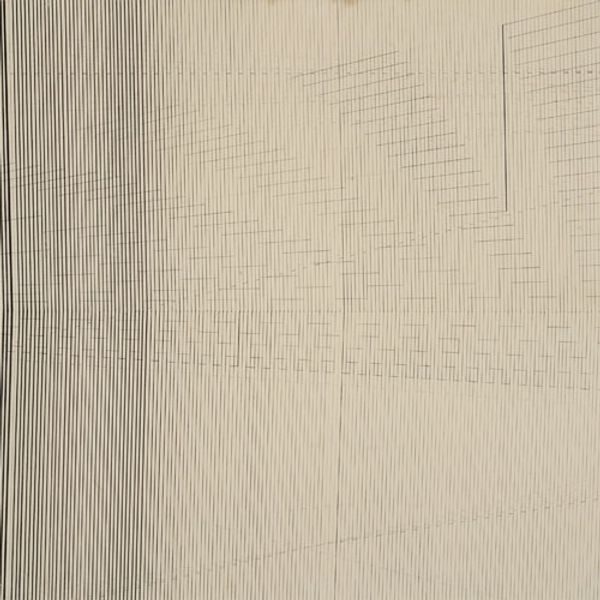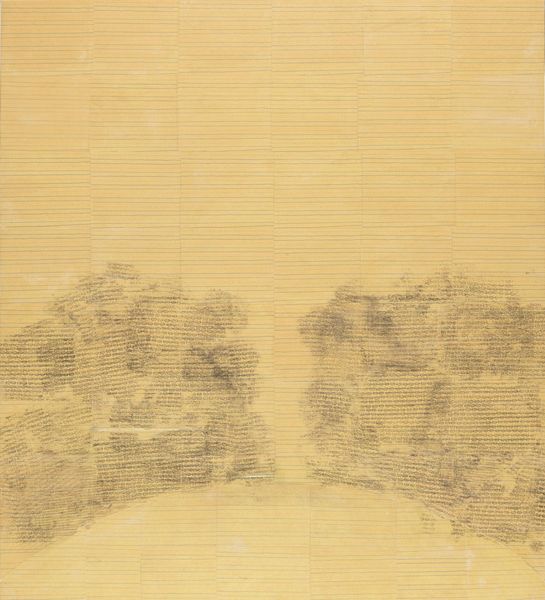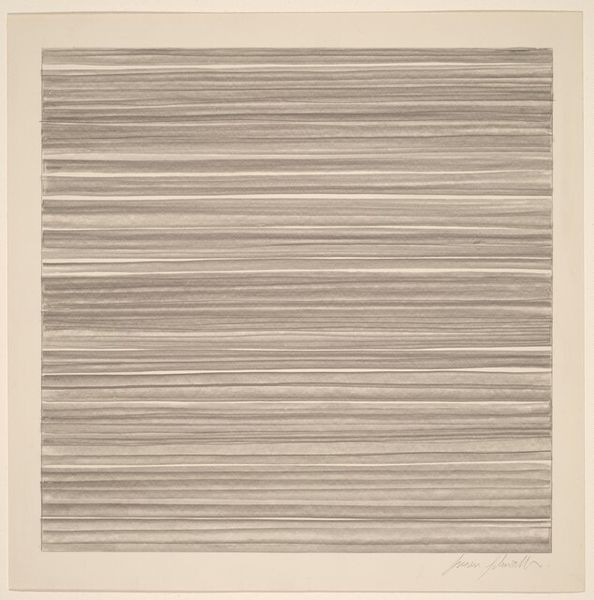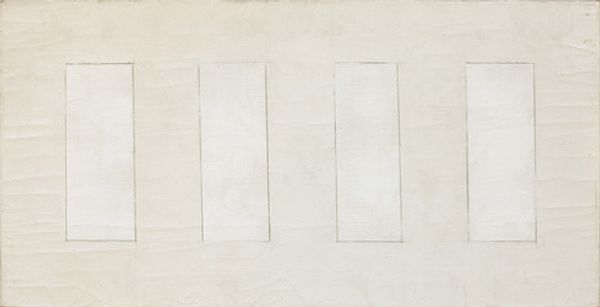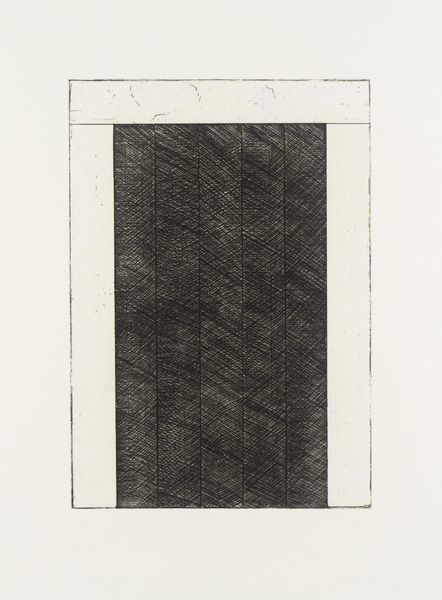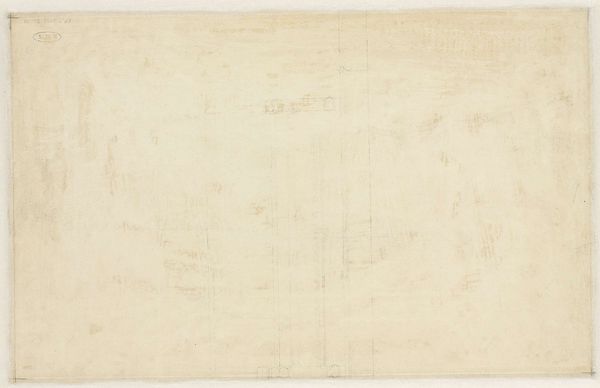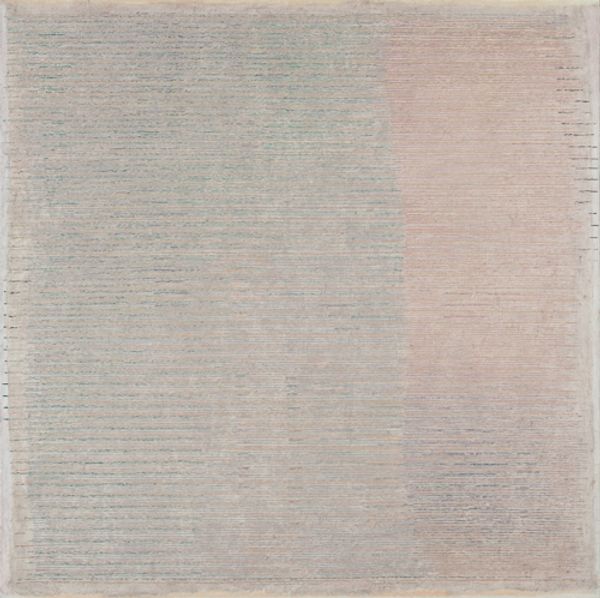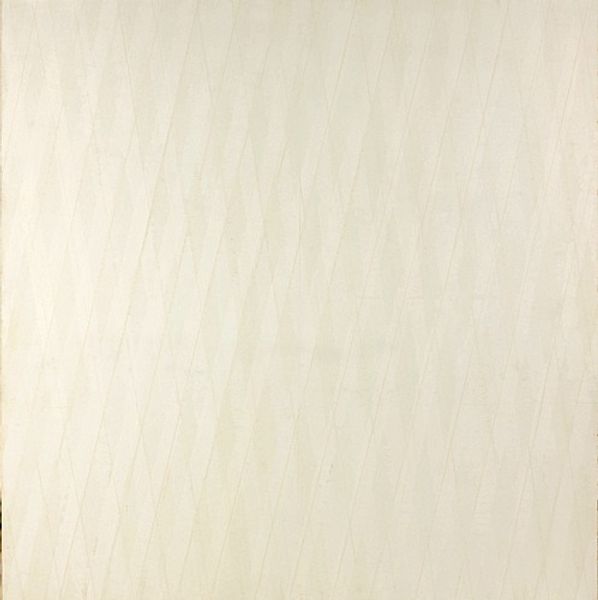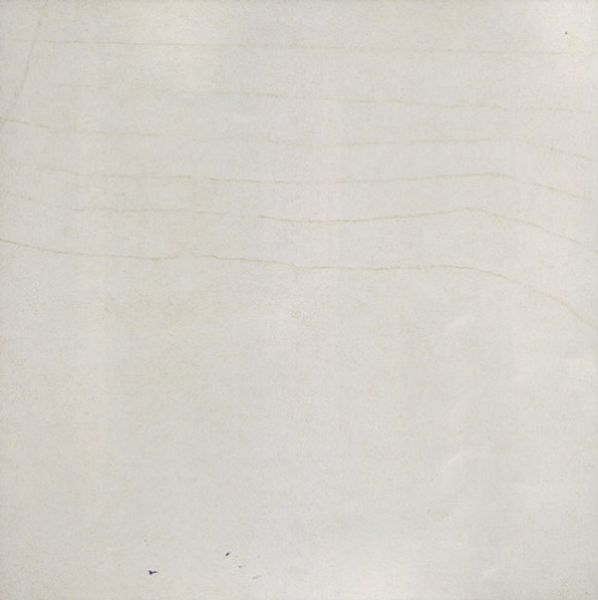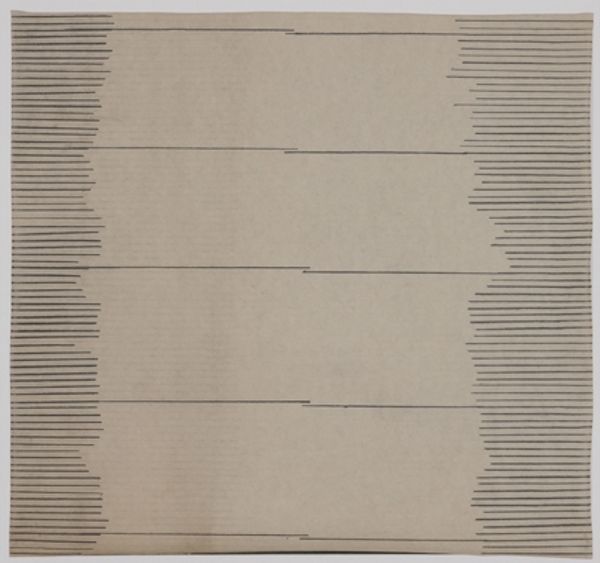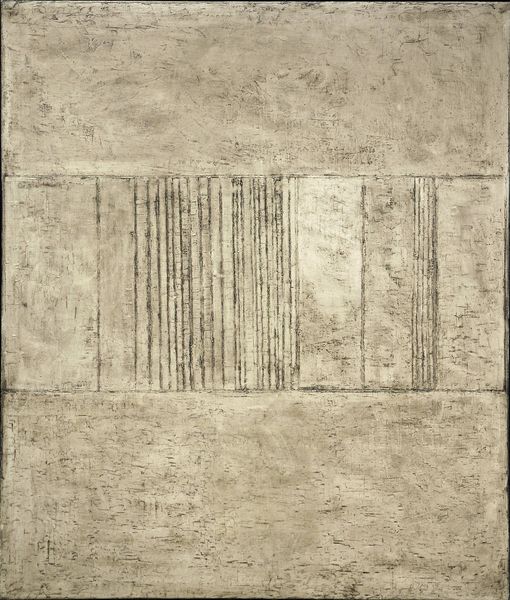
drawing, graphite
#
drawing
#
conceptual-art
#
minimalism
#
geometric
#
abstraction
#
line
#
graphite
#
modernism
Copyright: Nasreen Mohamedi,Fair Use
Curator: This work, "Untitled," is a graphite drawing by Nasreen Mohamedi, created in 1970. Editor: It's mesmerizing. Those finely rendered horizontal lines create such a subtle yet palpable visual field. It feels austere but also deeply meditative. Curator: Mohamedi’s practice, rooted in minimalist and conceptual art, moved away from representational forms towards pure abstraction. Consider her intersectional position as a woman artist working in post-colonial India, a context that largely overlooked the work of women artists pursuing abstraction. How does this inform the work? Editor: Absolutely. This precise linear construction feels like a radical act of self-definition, a space claimed against a patriarchal backdrop. The slight irregularities within the ordered structure hint at the human hand, a subtle assertion of identity. One can imagine Mohamedi's act of creating such even and clean lines in 1970 would have meant quiet disruption in the modern art sphere. Curator: Yes, there’s an intriguing tension. Mohamedi lived and worked during a time when art institutions in India were predominantly showcasing figurative works and those steeped in tradition. Her minimalist approach challenged established norms. Also, consider the rise of abstraction as a kind of universal language, a hope that crossed socio-political borders and connected humans around the world. What kind of politics does one see within these artworks? Editor: It’s a visual quietude, yet there's also a persistent disruption. Think about it. Nasreen consciously turned to geometric lines, refusing to bow to a market obsessed with narratives, whether socio-realistic or overtly feminine. So there is this quiet insistence, a bold presence of being and seeing that transcends her place. The labor itself also resonates as a meditative and subversive act. Curator: The artwork becomes an expression of not just visual space but also a socio-political stance. This work exemplifies her rigorous approach and reflects a critical dialogue between art, identity, and place. Editor: Indeed. It’s a piece that invites a slower, deeper form of looking – an exercise in attentive perception.
Comments
No comments
Be the first to comment and join the conversation on the ultimate creative platform.
